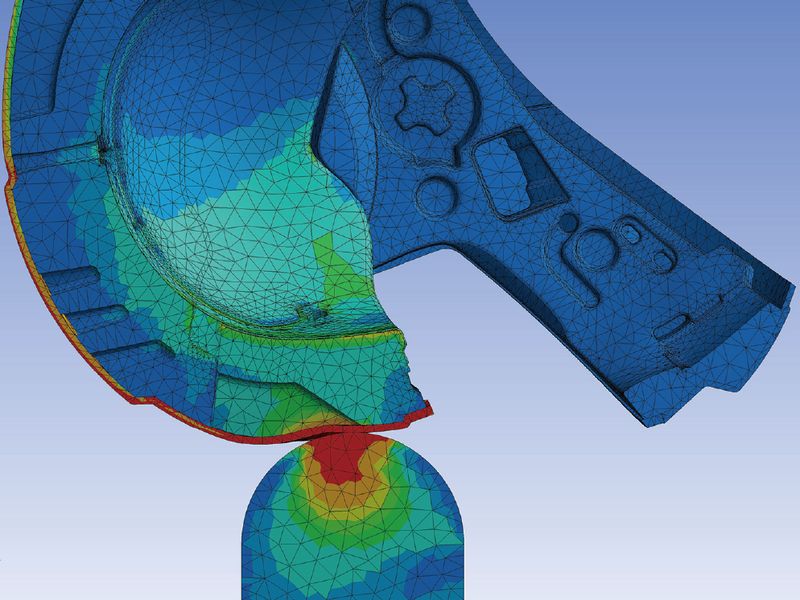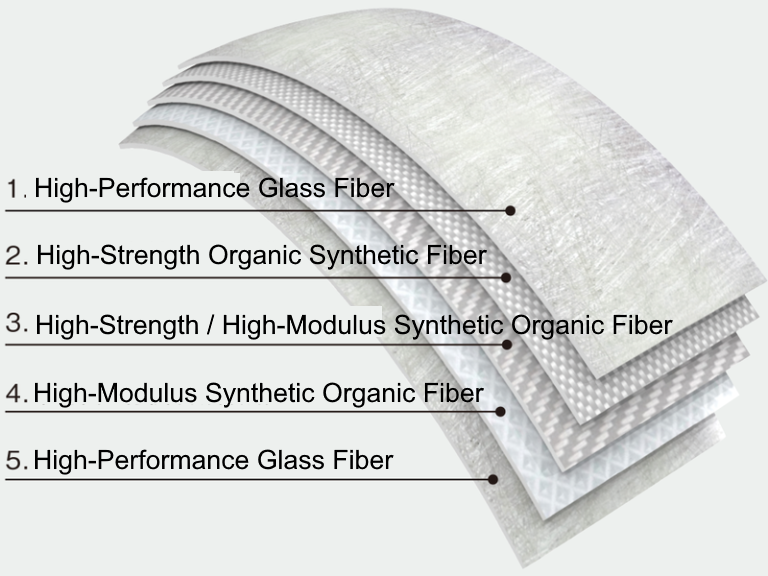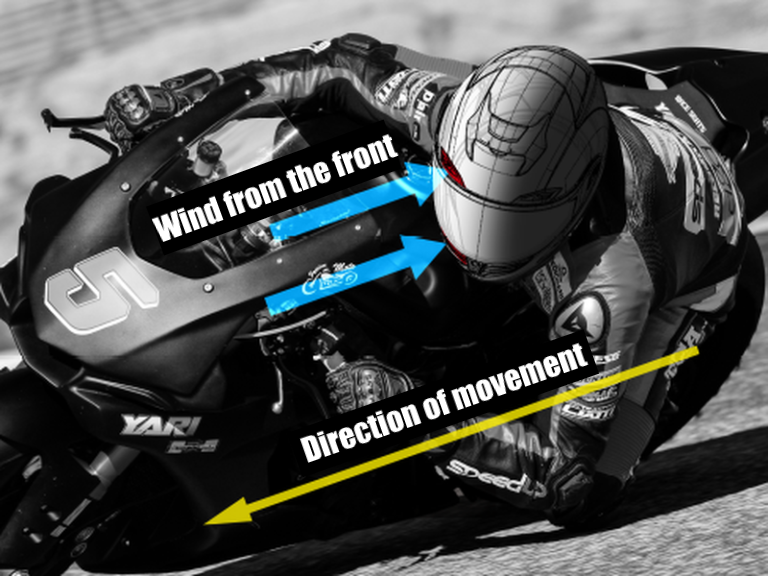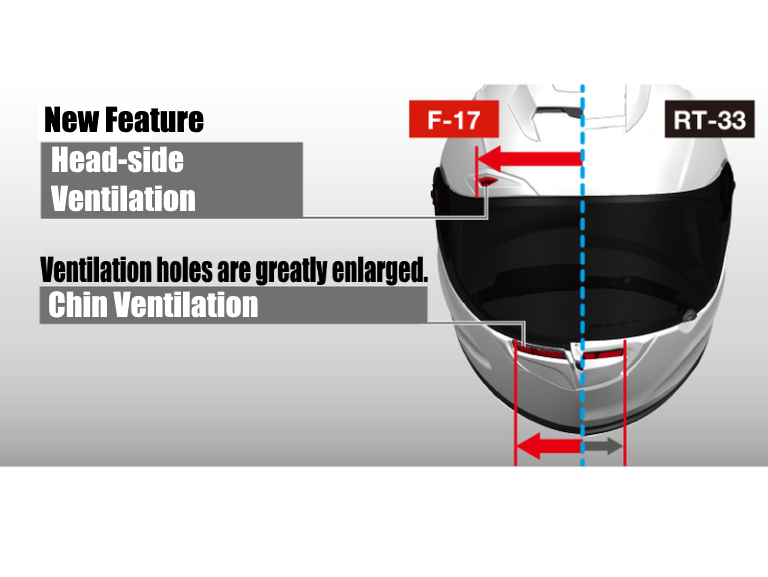OGK KABUTO's real racing model F-17, whose existence has been rumored since last year, has been released.
OGK Kabuto is known for the aerodynamic performance of its full-face helmets, and the F-17 has been brushed up even more than the previous model RT-33.
In addition, the F-17 has added features that have been requested by previous models, such as an emergency system.
In this article, I will show you a comparison with SHOEI's popular full-face helmet, X-14, as well as the previous model, RT-33!
OGK KABUTO's new model F-17
OGK KABUTO|F-17
- Black Metallic
- Flat Black
- White
OGK KABUTO's F-17 is a real racing model among the OGK's lineup of full-face helmets.
It has acquired not only the JIS standards required for use on public roads, but also the MFJ certification required for participation in races held in Japan.
As the successor model to the RT-33, which was also a racing model, it was a full-face helmet that was popular for a long time as a racing model with excellent aerodynamic performance at a relatively affordable price range.
Below is a brief summary of the specifications.
Size range: XS/S/M/L/XL/XXL
Color: White/black metallic/Flat Black * Basic Model
Price: 415 USD - (450 USD - including tax) Standard: JIS・MFJ Helmet material: A.C.T. (High-strength composite material cap *composite material of glass fiber and organic fiber)
Changes from the previous model RT-33
- RT-33
- F-17
As far as the manufacturer's website and preliminary explanatory materials are concerned, the following five items have been significantly changed in the new F-17 product.
- Evolution of safety performance
- Side ventilation
- New mechanisms (center lock, emergency system, antimicrobial interior)
- Intercom support
Evolution of aerodynamic performance

The helmet shape has a vertical impression with a narrowed front projection area, reminiscent of the form of a bullet train.
I also got a white helmet, and at a quick glance, the atmosphere is like that of a boiled egg.

Also, the Wake Stabilizer, which provides helmet stability at high speeds, has been evolved from the previous model RT-33.
By the way, this wake Stabilizer is a system patented by OGK KABUTO.

In addition, a new crest spoiler has been installed on the long head to reduce the force of the helmet trying to lift up due to wind pressure.
Evolution of safety performance
 |  |
The helmet itself has been improved in terms of safety, although the change is not apparent from the outside.
As is the case with the conventional RT-33, fiberglass-based material was used for the helmet as far as the racing model was concerned.
The helmet is made of multiple layers of materials that are not only strong, but also have anti-penetration performance and shock-absorbing elasticity, and these composite materials are also used for the chin.
Many people may remember hitting their chin hard when they fell, so this improvement will greatly improve safety.
Adoption of side ventilation
 |  |
Ventilation is added just around the eyebrows to provide proper ventilation not only when driving straight but also when cornering.
The mouth has been vented since the conventional RT-33, but in the new F-17, it has been extended horizontally.
It may seem like a small change if you put it in words, but if you increase the number of holes, the strength of the cap will decrease, so it is difficult to execute with safety unless you can secure the strength with materials and structure as mentioned above.
Addition of new mechanisms (center lock, emergency system, antimicrobial treated interior)

The center lock mechanism, which has been adopted by all companies, has been adopted for the new F-17.
The interior is continued from RT-33 of the conventional type, and it is newly processed with antibacterial on COOLMAX 2005 material, so that you can always keep the inside of a helmet clean.

In addition, it is a method of stopping the interior, but it is a method of pushing in with a button, and can be easily adjusted to a predetermined position.
The most notable feature is the emergency system.
This is a system that has been long-awaited by users who ride on tracks.
Without removing the interior itself, the urethane inside the interior can be pulled out, which is an OGK KABUTO original mechanism that reduces the burden on riders who fall.
Intercom support
- Ear pads available
- With the ear pads removed
The new F-17 is an unbeatable racing model among OGK KABUTO's full-face helmets, but it's also fully intercom-compatible.
There is a permanent speaker hole around the ear, and when not in use (not installed), a pad of the same material as the interior is fitted.

Also, for easy installation of clip type intercom body, clearance is secured at the base of the helmet for easy insertion of the clip.
Since the jawline is uneven due to the aero design, it will be difficult to use the affix type, so use the clip type!
I just weighed an F-17!
- F-17
- Z-8
- X-14
- RT-33
Surprisingly, many people are concerned about the weight of a helmet.
The conventional RT-33 has a sticker on the back of the head indicating the weight, but the new F-17 does not have such a sticker, so I weighed it myself.
I weighed the cap of size L (with interior). The result was 1721 grams. *Please note that the value may vary slightly depending on the equipment and circumstances.
The measurement results of SHOEI's popular helmet X-14, Z-8 which is known for its lightness, and the conventional model RT-33 are also included for comparison.
- F-17: 1721 grams
- Z-8: 1462 grams
- X-14: 1659 grams
- RT-33: 1521 grams
Regardless of the actual weight, you can feel the lightness of the new F-17 when you hold it in your hand.
On the contrary, when I held the SHOEI X-14 in my hand, I had the impression that it was packed with fruit rather than "heavy", especially around my temples.
But still, it's remarkable how light the Z-8 is!
Comparison with SHOEI X-14
SHOEI|X-14 Helmet

I'm going to compare it with SHOEI's popular full-face helmet X-14, which is rumored to be similar.
- X-14
- F-17
- X-14
- F-17
First of all, the size of the SHOEI X-14 looks smaller than the F-17.
Specifically, the area from the cheek to the back of the head looks wider on the F-17.
The weight of the helmet is the same for both the F-17 and the X-14, and both are small in terms of frontal projection area like the bullet train.
- X-14
- F-17
As for the size of the shield, F-17: 13cm, X-14: 12cm, and the front part of F-17 is 1cm longer.
However, the position of the shield itself is different between X-14 and F-17, so it is not necessarily linked to how it looks when you actually wear it.
Can you recommend the F-17?
OGK KABUTO|F-17
I can recommend this one! (Definitely)
The only thing that bothered me was that the rubber edge on the bottom of the helmet was not glued very tightly, and I had the impression that it might peel off sooner or later.
I also had the impression that SHOEI was one step ahead of us in terms of duct materials and finishing.
One thing to keep in mind is that the supply of this product is unstable as of October, and there is not much stock in circulation. In other words, if you find one, buy it immediately, there is no time to hesitate!
























